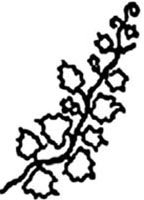In Iguala, Mexico, I met an old man who was selling what he termed a “thing
of antiquity.” I paid what amounts to $50 dollars for an object that was said to be from the ancients. I bought it without
asking for its history: where was it found, who found it, and most important of all, who does it belong to? That is, what
of its original owner?
In November of 2004 I went to visit some friends of mine in the Sierra Madre
Mountains of Guerrero. I was shown a mask of the head of a Jaguar. It was also said that this mask was made by a holy man,
who before making such mask fasted and prayed and then dreamed such mask. Thus, such mask has an “un-going, historical,
traditional importance” to the Tlaka-Nahua culture of Alto Balsas, Guerrero, Mexico.
These two examples explains clearly the difficulty and confusion and ambiguity
of the term ownership.
On the one hand, it seems that ownership has to do with an on-going,
traditional, or cultural importance central to the [or a] culture itself [which] could not [be] alienated, appropriated, or
conveyed by any individual.” [ NAGPRA's definition of Ownership ]
On the other hand, ownership also seems to refer to something that can be
sold or bought. (e.g., I own a house, therefore, I can sell such house).
The word that catches my attention, however, is the word “on-going.”
That is, ownership depends on whether or not such property belongs to an individual Native American group or culture or person
which lineage can be traced back to such property. But what if one cannot trace back such ownership? After all, according
to the Vanishing Race myth: all American Indians perished … with the exception of a handful of mixed people.
Here is another example, Teotihuacan does not belong to the Tlaka-Nahua people
of Mexico, but to the Mexican government. Why? Because according to the Mexican government the Toltecs died a long long time
ago. In other words, there are no Toltecs living today.
Not only that, but the problem also arises when one tries to define ownership
by a traditional, religious terminology, versus ownership as defined by secular Native American law. Or both. Native Americans
often speak of the secular in religious terms. For example, a common rock can be said to possess sacred properties.
The Jaguar Mask, see above, was said to be a living entity; a living person, a living god; it was said that it was conceived
in dreaming and therefore it was sacred.
The question, thus arises, what if the carver of the Mask decided to sell
me this “traditional artifact?”
The term ownership, as defined by NAGPRA, then, requires serious reflection.
(I welcome your comments and suggestions.)

